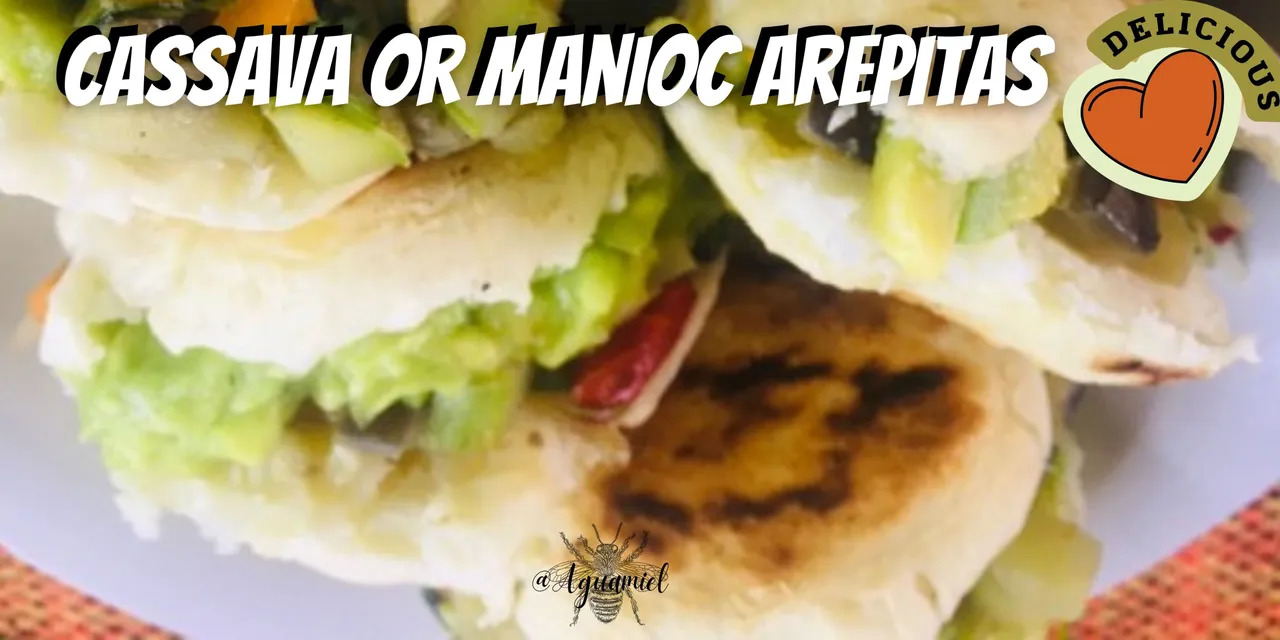
Reciban mi saludo querida comunidad y los hivers que aquí hacemos vida creando magia en la cocina.
La receta que comparto hoy es un plato popular y tradicional por excelencia en nuestro país Venezuela: La arepa. Se puede disfrutar en cualquier momento en todas las regiones del país y con una gran variedad de rellenos. Esta vez hecha de yuca o mandioca, como alternativa para sustituir la harina refinada, ¡es una de mis comidas favoritas!
La arepa nuestro pan diario, es tan rica y diversa que se puede preparar con diferentes ingredientes desde la tradicional hecha de maíz, de plátano verde, de avena o de cualquier verdura o tubérculo.
𝙀𝙡 𝙘𝙖𝙥𝙞́𝙩𝙪𝙡𝙤 𝙙𝙚 𝙝𝙤𝙮 𝙨𝙚 𝙩𝙞𝙩𝙪𝙡𝙖: 𝘼𝙧𝙚𝙥𝙞𝙩𝙖𝙨 𝙙𝙚 𝙔𝙪𝙘𝙖 𝙤 𝙢𝙖𝙣𝙙𝙞𝙤𝙘𝙖
Antes de preparar los materiales en mi cocina, enciendo el Ipoh, comienza a sonar la canción: Claro de luna de la agrupación venezolana -El tuyero ilustrado- me acompaña y me envuelve, excelente elección.
Te muestro la preparación y tú le agregas el ingrediente especial…
Vamos directo con los ingredientes y al paso a paso
Ⲓⲛⳋⲅⲉ𝖽ⲓⲉⲛⲧⲉ⳽:
1kg de yuca o mandioca
Una cdta. de sal
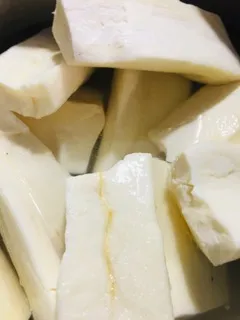
Pɾepɑɾɑciσ́ƞ:
Ya tenía las yucas o mandiocas limpias en el refrigerador. Eso suelo hacer luego de las compras pico, lavo y reservo es mucho más práctico y fácil al momento de cocinar.
Las colocamos en una olla, cubrimos con agua, agregamos un poco de sal. Las dejamos al fuego hasta que queden totalmente blanditas.
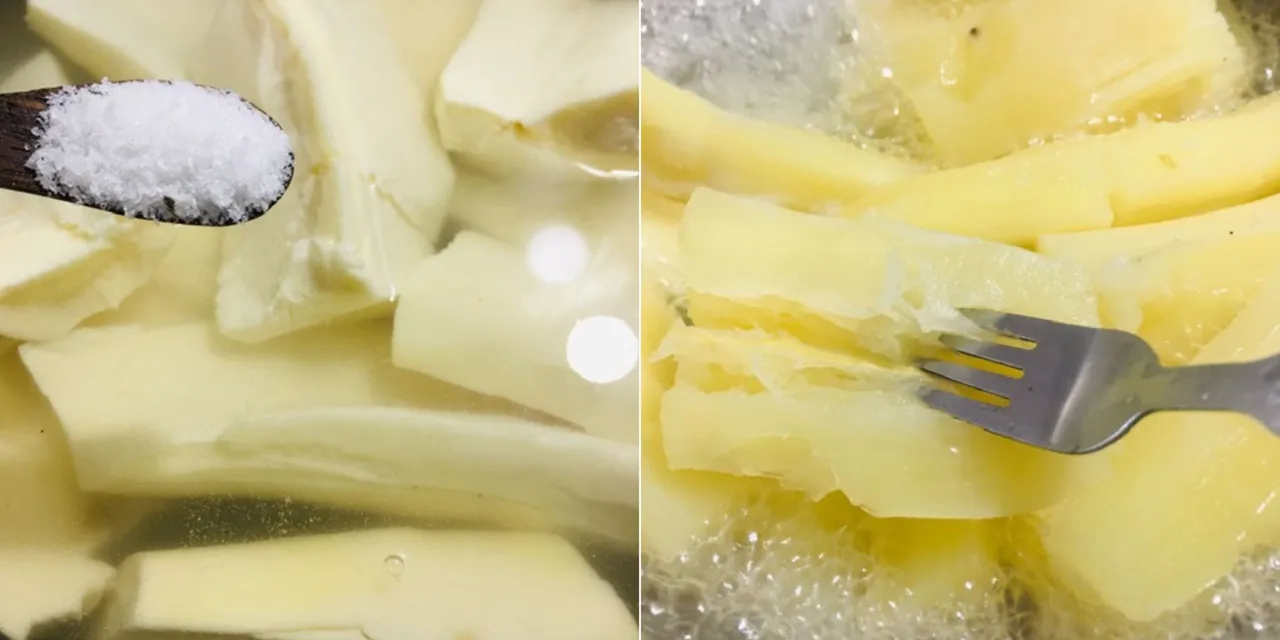
Verificamos que estén blanditas y las escurrimos. Con un tenedor o con un pisa papa las trituramos -evitando agregar agua para no volver puré- nuestra masa requiere de una textura consistente.
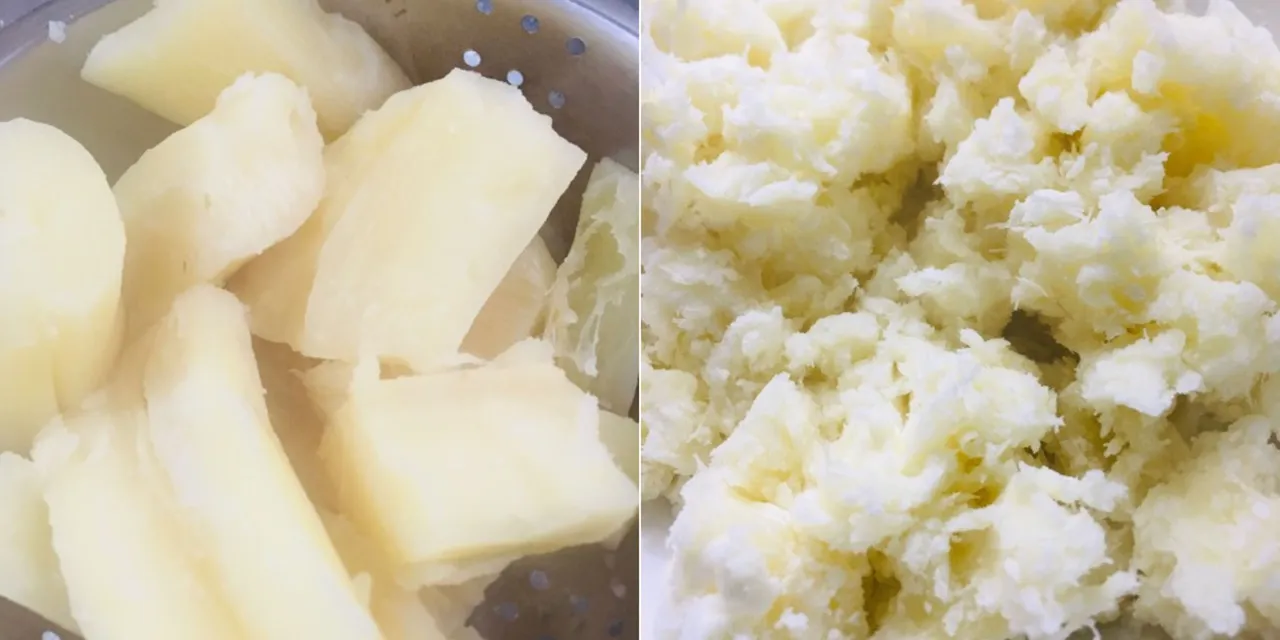
Las llevamos a la mesa de trabajo para amasar. Dividimos en partes iguales y formamos bolitas que serán nuestras arepitas.
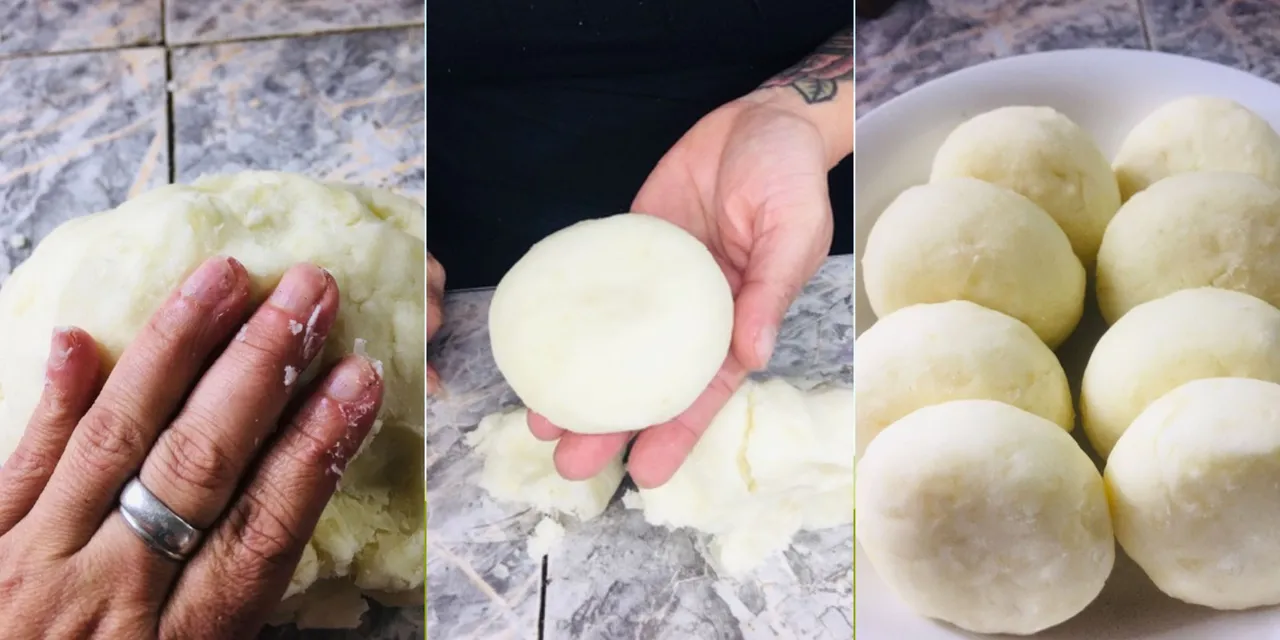
Calentamos un budare, plancha o satén con un poco de aceite, colocamos cada bolita de masa -notarás que está un poco dura- no te preocupes, te pones un poco de agua en las manos como sueles hacer tus arepas para darle forma y colocarlas en la plancha.
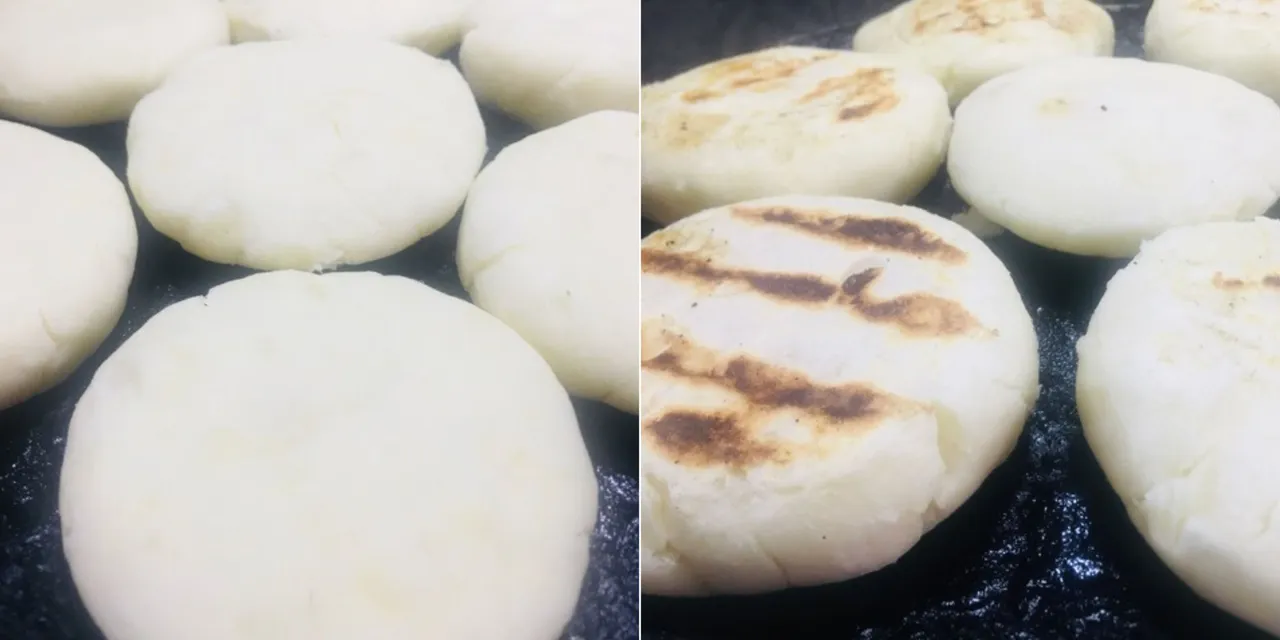
Mientras se doran nuestras arepitas, preparamos el relleno, yo las acompañé con verduras frescas salteadas, aguacate cortado en dados o en puré -lo hice de las dos maneras- y una crema de berenjena ahumada para potenciar aún más el sabor de estas arepitas.
-Luego les comparto la receta de los vegetales salteados y la crema de berenjena-
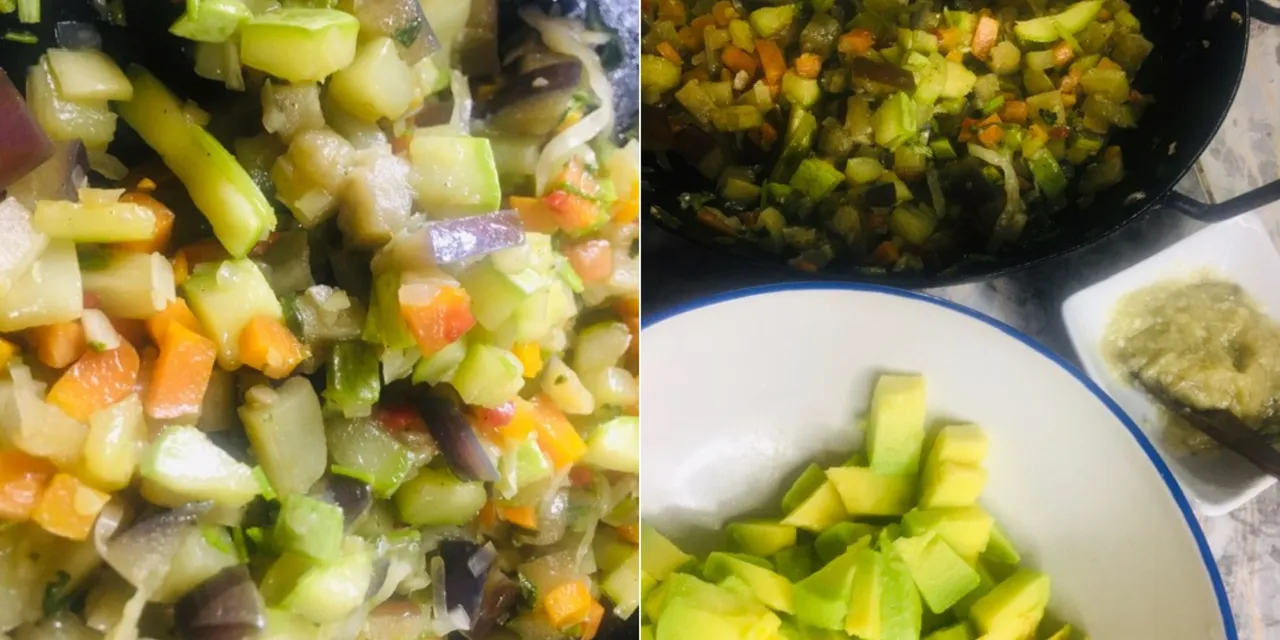
Así quedan nuestras arepitas, mira estas bellezas...

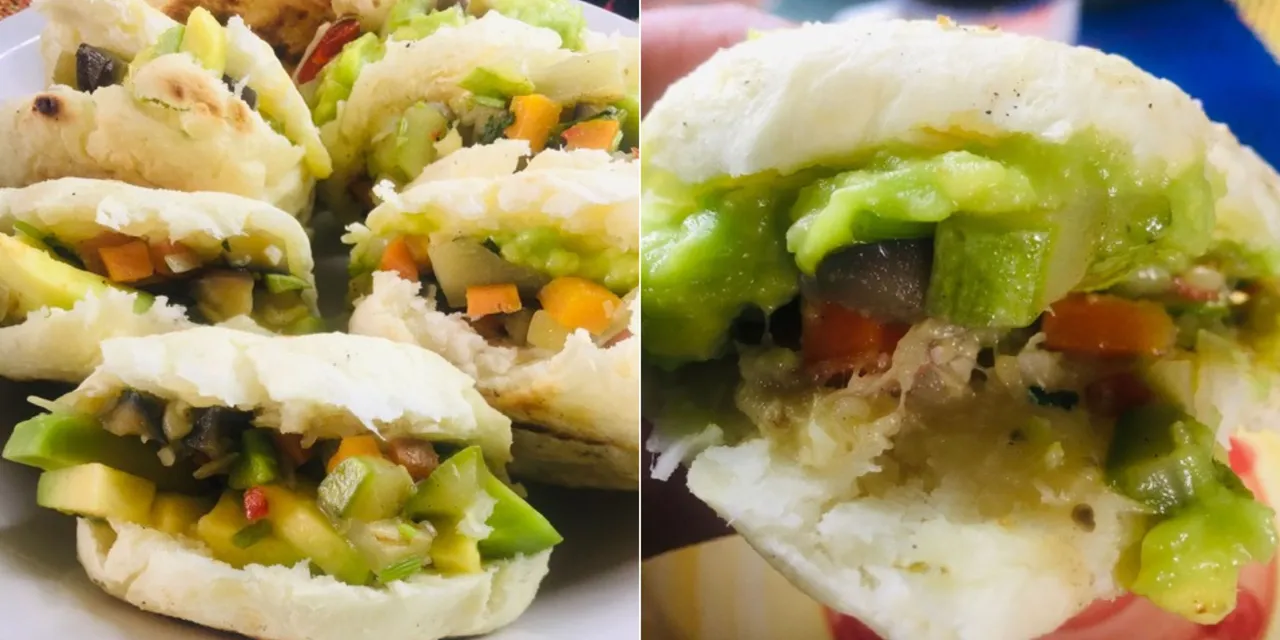
La mejor manera de acompañar estas arepitas es con un guayoyo -café clarito- como decimos aquí en mi tierra.

Sencillamente, delicioso.❤️
English
Receive my greetings dear community and the hivers that here we make life creating magic in the kitchen.
The recipe I share with you today is a popular and traditional dish par excellence in our country Venezuela: The arepa. It can be enjoyed at any time in every region of the country and with a variety of fillings. This time made of cassava or manioc, as an alternative to replace refined flour, it is one of my favorite foods!
Ah, it's one of my favorite foods!
The arepa, our daily bread, is so rich and diverse that it can be prepared with different ingredients, from the traditional one made of corn, green plantain, oatmeal or any vegetable or tuber.
𝗧𝗼𝗱𝗮𝘆'𝘀 𝗰𝗵𝗮𝗽𝘁𝗲𝗿 𝗶𝘀 𝗲𝗻𝘁𝗶𝘁𝗹𝗲𝗱: 𝗖𝗮𝘀𝘀𝗮𝘃𝗮 𝗼𝗿 𝗺𝗮𝗻𝗶𝗼𝗰 𝗮𝗿𝗲𝗽𝗶𝘁𝗮𝘀
Before preparing the materials in my kitchen, I turn on the Ipoh, the song begins to play: Claro de luna by the Venezuelan group -El tuyero ilustrado- accompanies me and envelops me, excellent choice.
I show you the basic preparation and you add the special ingredient ....
Let's go directly to the ingredients and the step by step.
Ꙇᥒɠɾᥱᑯɩᥱᥒt⳽:

1kg of cassava or manioc
One teaspoon salt
ᕈɾᥱρᥲɾᥲtɩoᥒ:
I already had the cleaned yuccas or cassava in the fridge. That's what I usually do, after shopping; I wash them and put them aside; it's much more practical and easier when it's time to cook.
Place them in a pot, cover with water, add a little salt. We leave them on the fire until they are completely soft.

Verify that they are soft and drain them. With a fork or a potato masher we mash them -avoiding adding water so as not to turn them into puree- our dough with a consistent texture.

Divide the dough into equal parts and form small balls that will be our arepitas.

Heat a budare, griddle or saten with a little oil, place each ball of dough - you will notice that it is a little hard - do not worry, put a little water on your hands as you usually do your arepas to shape them and place them on the griddle.

While our arepitas are browning, we prepare the filling, I accompanied them with sautéed fresh vegetables, diced or mashed avocado -I did it both ways- and a smoked eggplant cream to further enhance the flavor of these arepitas.
-I'll share the recipe for the sautéed vegetables and the eggplant cream later.

This is how our arepitas look like, check out these beauties...


The best way to accompany these arepitas is with a guayoyo -café clarito- as we say here in my land.

Simply delicious.❤️

Fotografías de mi galería personal, editadas en Canva
https://www.deepl.com
Twitter: @soyaguamiel